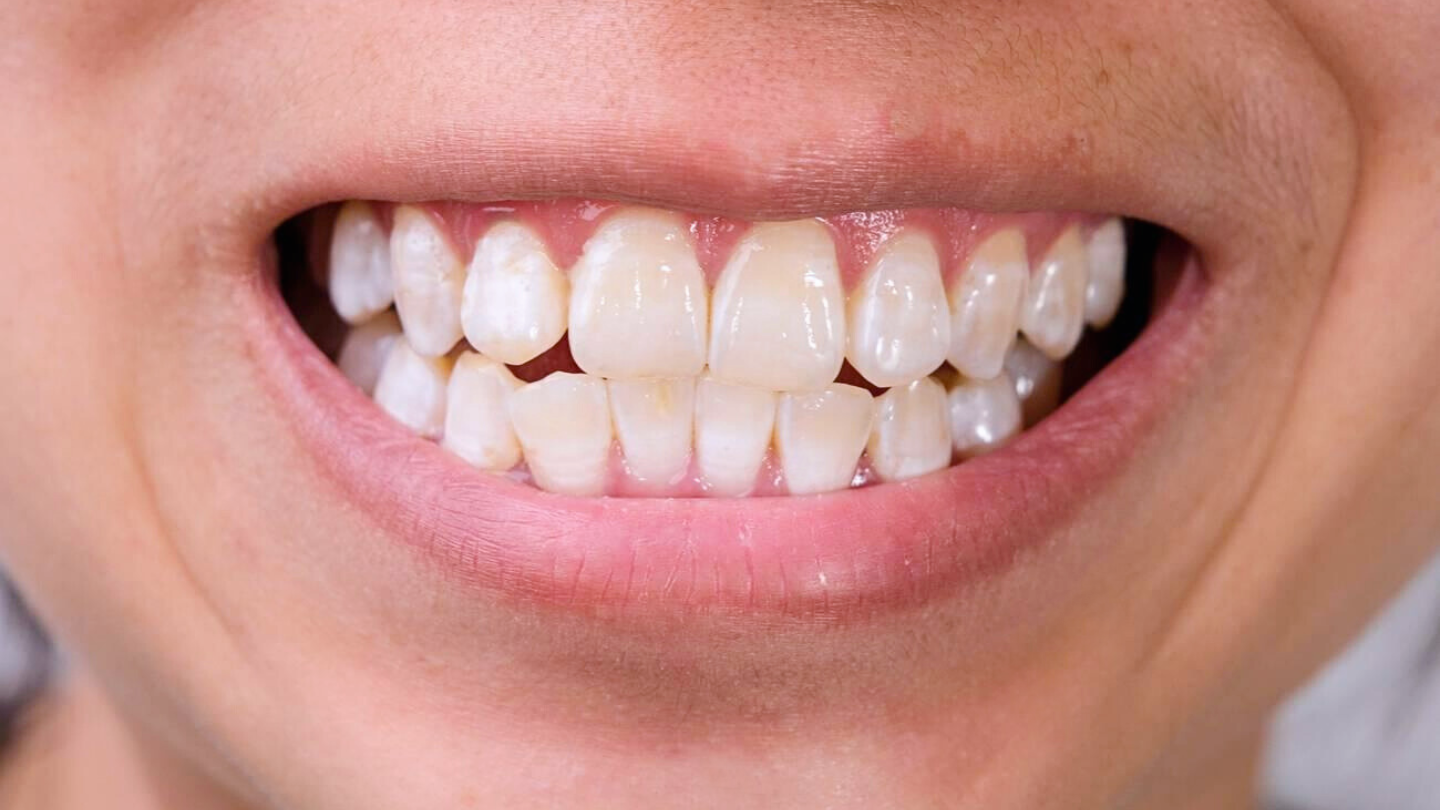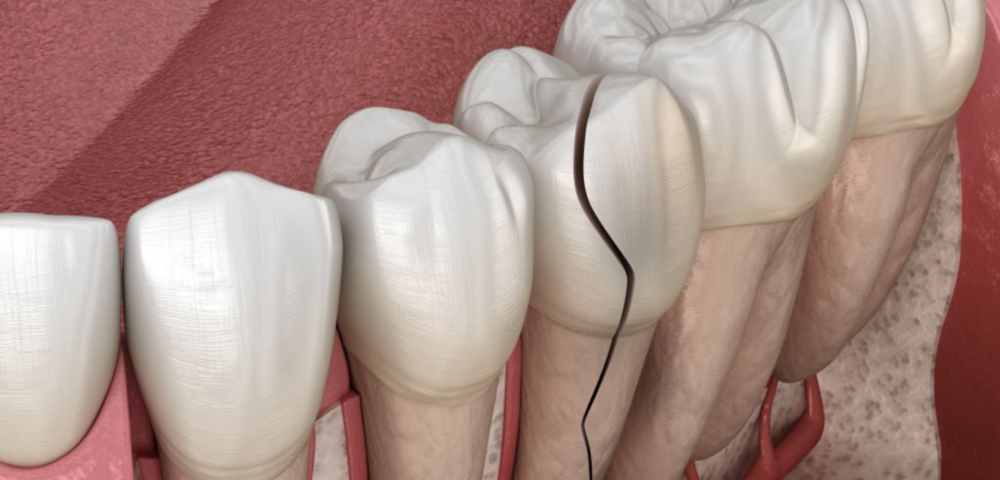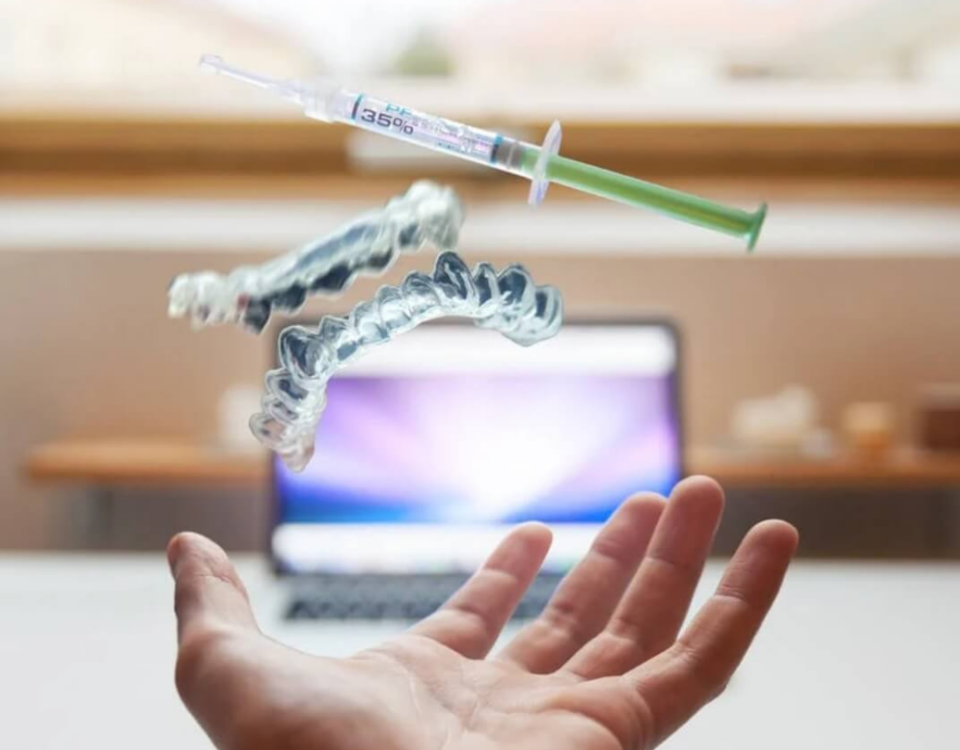
Why Do I Have White Spots On My Teeth?
May 3, 2023
How Do You Know If You Have A Cavity
May 22, 2023Do you have dental damage and are wondering, “How to fix a cracked tooth?”.On the positive side, a cracked tooth does not have to damage your smile. However, this problem is not something you cannot fix on your own.
At Langley Dental Care, we have a range of tools available to save and repair cracked teeth. Discover some of the ways we fix cracked teeth in our patients.
How Teeth Can Crack
Teeth can crack from several factors. By examining your lifestyle, you can see if you have any of these risk factors for developing cracked teeth and make changes to prevent future cracks after treating your tooth.
First, you can develop a crack slowly over time. Often this happens in people who grind their teeth at night. You may not notice this type of crack because it can happen gradually, and you might already have jaw pain from teeth grinding that masks the discomfort of the crack.
Second, cracks can occur suddenly from biting down too hard on certain foods. For example, chewing ice cubes, biting hard candy, or accidentally biting into a bone while eating chicken or other meat can severely stress a tooth and cause a crack.
Accidents can cause teeth to crack, too. Playing impact sports without a mouthguard, receiving a blow to the face, getting into a car accident, or falling can lead to cracked to broken teeth.
Finally, cracked teeth can happen when you inappropriately use your teeth as tools. Removing bottle caps or ripping open packages with your teeth can both damage the teeth and cause them to crack.
If you avoid the above situations, you can lower your chances of cracking a tooth in the future.
Ways Teeth Can Crack
The location and orientation of a tooth’s crack are important factors in how your dentist will treat the cracked tooth. Teeth have two main parts and three layers within both of those areas.
The crown is the biting part of the tooth above the gum line. Cracks that only impact the crown have the greatest chance of getting successful treatment without needing to extract the tooth.
Under the gumline lies the tooth’s root. Cracks in this sub-gumline area of the tooth may require extraction of the tooth. Sometimes cracks that start in the crown can lengthen over time and go below the gums, making treatment more difficult.
Cracks can impact any of the three layers of the teeth, too. The enamel is the exterior surface of the tooth. Cracks only in the enamel may not cause pain or need treatment. Underneath lies the dentin. When cracks reach the dentin, they can cause tooth sensitivity. Pain happens when the crack deepens to impact the pulp inside the canals of the tooth’s root.
The following are the ways dentists describe the types of cracks based on their location and length:
Craze Lines
These lines impact just the very top of the tooth. While they look unsightly, especially on the front teeth, they do not cause pain or worsen. In most cases, you only need cosmetic treatment, such as veneers or bonding, to correct the appearance of craze lines.
Cracked Teeth
Generally, cracked teeth refer to cracks that affect the crown. The most treatable cracks remain above the gum line. When the crack impacts the crown and the tooth under the gums, the dentist may need to pull it.
Split Teeth
Cracks in teeth tend to get longer if you don’t get treatment. The worst case happens when a crack completely splits a tooth into two parts. These types of cracks may require extraction and a dental implant to restore the mouth.
Vertical Crack
The hardest type of crack to detect is a vertical crack. These move upward from the root tip of the tooth toward the crown. Because the crack often stays under the gum line, you may not know that you have this type of damage unless the tooth gets infected.
Cusp Fracture
Fillings can weaken the crown of your tooth. If you have a filling and crack the area near it, you may only have a cusp fracture. These are not deep cracks; a dentist can quickly repair them with a new filling or crown.
Do You Have a Cracked Tooth? How to Tell
Cracked teeth may cause symptoms that vary based on the type of crack that you have. Watch out for the following symptoms, which may indicate that you have a crack and need a dental exam:
- New sensitivity to sweets, heat, or cold
- Pain when biting
- Erratic tooth pain
- Swelling on the gums
- Visible cracks
Your dentist will x-ray your teeth to determine if you have a crack, where it is, and how to treat it.
How to Fix a Cracked Tooth
The treatment options for cracked teeth vary as much as the types of cracks that you can experience. The best chances for getting a tooth treated without needing extraction will be when you have a crack that only affects the tooth crown. Waiting for treatment can worsen the crack until you need the tooth pulled.
Your dentist may need to do a root canal if you have a fracture that reaches the pulp. After having the root canal, you may get a crown to cover and strengthen the tooth. Sometimes, dental cracks may only need bonding or veneers to cover them and stop their progression.
When you see your dentist about a crack, they will tailor the treatment specifically to your condition. If you have questions about the type of treatment or alternatives, feel free to ask your dentist before scheduling treatment.
Schedule Your Visit with Langley Dental Care for Cracked Tooth Repair
Get treatment for your cracked tooth by scheduling a visit with us at Langley Dental Care. Whether you need a root canal treatment or a crown, we can help with our comprehensive dental care.



